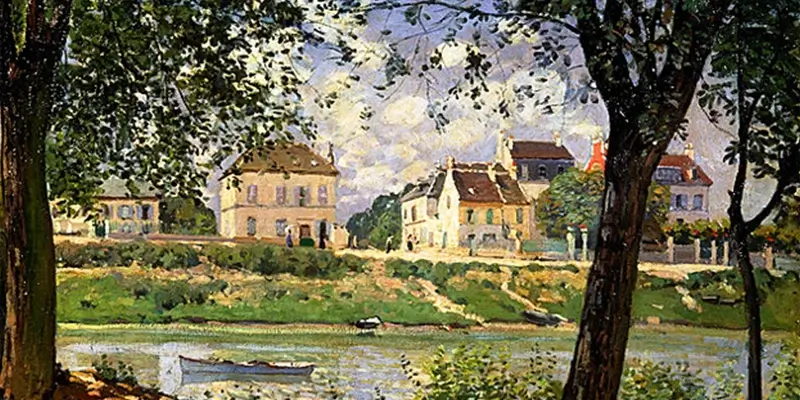Discovering the secrets of the most innovative artistic movement of the 19th century that transformed painting and other arts such as literature and music..
Impressionism is one of the most important and influential painting movements in history. With its emphasis on light and color, artists broke with established norms and changed the way the world viewed art. Impressionism was born in France in the late 19th century, at a time of social and cultural change in the country. Artists were looking for a way to express reality in a more direct and honest way, without the rigidity and formality that characterized the art of the time.
Their inspiration came from nature and everyday life. In addition, their main objective was to capture the light and color of the present moment. To achieve this, they used an innovative technique: the loose and rapid brushstroke, which allowed them to capture the impression of the instant without worrying about minute details.
Among the most prominent Impressionist artists were Claude Monet, Pierre-Auguste Renoir, Edgar Degas, Berthe Morisot, Camille Pissarro and Alfred Sisley. Each one had his own style and approach. But they all shared the same passion for capturing the light and atmosphere of their subjects.
On the other hand, one of the most important characteristics of impressionist art is the use of bright and luminous colors. The representatives of this movement believed that colors were fundamental in conveying the emotion and feeling of a moment, so they experimented with new combinations and tones. They also focused on atmosphere and the quality of light, and created works that seemed to capture life in motion.

This new style of art known as Impressionism was named after Claude Monet's painting Impression, Soleil levant (1872-1873, «Impression, rising sun»).
Although it was considered a radical movement in its time, its influence extended beyond painting. In this way, it inspired other artists to seek new forms of expression and led to a revolution in the way art was understood. Impressionism also had an impact on literature, music, fashion and design. In the case of the latter, emphasis was placed on light and color, which translated into innovative fabrics and patterns.
Today, Impressionist art remains a source of inspiration for many artists. The most representative works can be found in some of the world's most prestigious collections, and continue to be appreciated for their beauty and innovation. In addition, its legacy has extended to other art forms, such as film and photography, which use light and color to tell stories and create emotional atmospheres.
Beauty in the everyday: the legacy of impressionism
Despite its lasting impact on culture, in its early days, Impressionism was not widely accepted by critics and the public. Artists encountered opposition from defenders of the academy. These considered the loose technique and lack of detail to be signs of inferior artistic ability.
However, the Impressionist exhibition of 1874, organized by a group of artists, including Monet, Renoir and Degas, was a turning point in the history of art. It gave them the opportunity to present their works to the public and attract numerous visitors, including artists, art critics and collectors. Despite some negative reviews, the event was a success and marked the beginning of a movement that would forever change the history of art.
As mentioned earlier, one of the most important characteristics of Impressionism was its focus on depicting everyday life and nature. They found beauty in mundane and ordinary subjects that other artists had previously ignored, such as the streets of Paris, gardens, trains, and landscapes. Their works captured the emotion of the moment, and conveyed a sense of vibrancy and movement that had not been seen before in painting.





In addition to its focus on everyday life, Impressionism was also influenced by the new scientific and technical theories of the time. The Impressionists were interested in color theory and how colors interact with each other in different lighting conditions. They used innovative techniques, such as the application of thin layers of paint to create transparencies and shadows, and direct observation of nature to capture light and atmosphere.
Impressionism was also an international movement, extending beyond France. Artists in other countries, such as the United States and Great Britain, also adopted the Impressionist technique and adapted it to their own cultures and styles. At the United States, for example, Impressionism became associated with nature and landscape. In this way, it became a unique and distinctive form of expression.












Leave a Reply